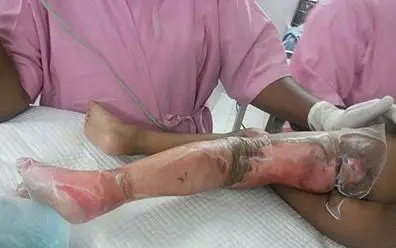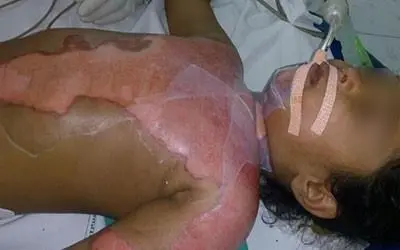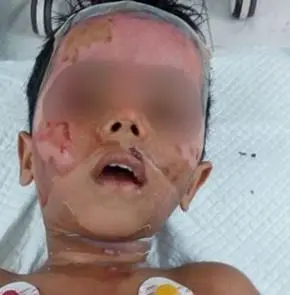Burn Injury: Types, Treatments & Recovery
The information sheet is only intended for educational purposes. To ensure this information is appropriate for your kid, please speak to your doctor or another qualified healthcare provider.
Introduction
Burn wounds and injuries have the potential to be serious, and they should be managed by teams skilled in handling children who have endured trauma of this nature. Children with burns can typically be treated as outpatients. Normally, superficial burns recover in 10 days without leaving any scars. Burns that have not healed after 10 days may need to be evaluated by a burns specialist or service to determine whether surgery is necessary and whether there is a chance of scarring.
The type of care your child needs will depend on the extent of the burn injury, the size of the burn wound, the body part burned, the child's age, and these factors. To facilitate wound healing, specific burn dressings are applied and worn for up to 7 days.
The kid may need to be admitted to the hospital so that further therapies can be accessed if the burn wound is significant, deep, extremely painful, or affects certain sections of the body that are difficult to manage at home. Electrical burns will definitely necessitate hospitalization.
The outcome of the burn injury can be greatly improved by using cool running water as appropriate first aid for 20 minutes.
What could be done to stop the burning process as soon as possible?
- When a flame flares up, douse it with water (stop, drop, cover your face and roll). Avoid running.
- If you get scalds from hot liquids, take off your clothes as soon as you can since the heat will soak into them and cause further burning.
- Avoid removing skin that has adhered to garments.
- Take off your jewellery.
Seek immediate medical care if your child is:
- Unconscious
- Experiencing trouble breathing or experiencing a possible inhalation of hot liquid or its steam.
- Experiencing uncontrollable pain.
Before seeking medical treatment, simple first aid and pain alleviation are usually sufficient.
How is the first aid done?
Start as soon as possible after the accident and run cold water over the burn's surface for 20 minutes. Stop the child from shivering by keeping him/her warm.
- If at all possible, heat the area to 28 to 30 degrees Celsius.
- Refrain from putting any creams, lotions, ice, or frozen water on the burn wound because they are ineffective and could make it worse.
- Cold, wet clothing is less effective in first aid treatment because they absorb heat and must be rinsed with cool tap water every minute; nevertheless, the burn may be "misted" with cold water from a spray bottle while the kid is being transferred to medical assistance.
What is the treatment procedure for burns injury?
Appropriate pain relief/analgesia for the child
- A dressing is applied to protect the injury from further trauma and promote healing.
- Burn wounds are reviewed and redressed every 3-7 days (to determine how deep the burn is, it may take up to 14 days).
- Burn wounds that have not healed within 14 days should be discussed with a burns specialist to determine ongoing treatment.
- Wound dressings may change as the burn proceeds to heal.
- Home care instructions for the child, together with contacts and respective phone numbers, will be given to you prior to discharge.
What are the steps to be taken for pain Relief?
All burns are painful.
- Cold water provides excellent pain relief if used early.
- Medicine such as Paracetamol may give better pain relief.
- If pain is not able to be managed at home with oral medication- the child requires immediate review by a medical officer. Consider – your child may cry for a number of reasons other than pain, like fear, anxiety or hunger.
- Your reassurance will comfort them (listen to their fears and answer their questions truthfully).
What are the complications of burns injury?
Infection
Seek immediate medical advice if-
- The child refuses to eat or drink or appears to be ill.
- The child’s temperature is higher than 38.5 degrees Celsius. ∙ A foul smell emanates from the wound.
- The skin around the wound may feel hot to the touch and turn red. ∙ The fluid coming from the wound gets worse. At the location of the wound, there is agony.
- The dressing comes off completely or is displaced.
- Keep the bandages for wounds tidy and dry.
- It's crucial to keep your child away from anyone with chicken pox or cold sores on their lips unless your child has already had chickenpox or has received a vaccination against it.



